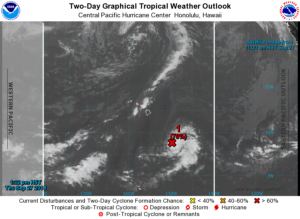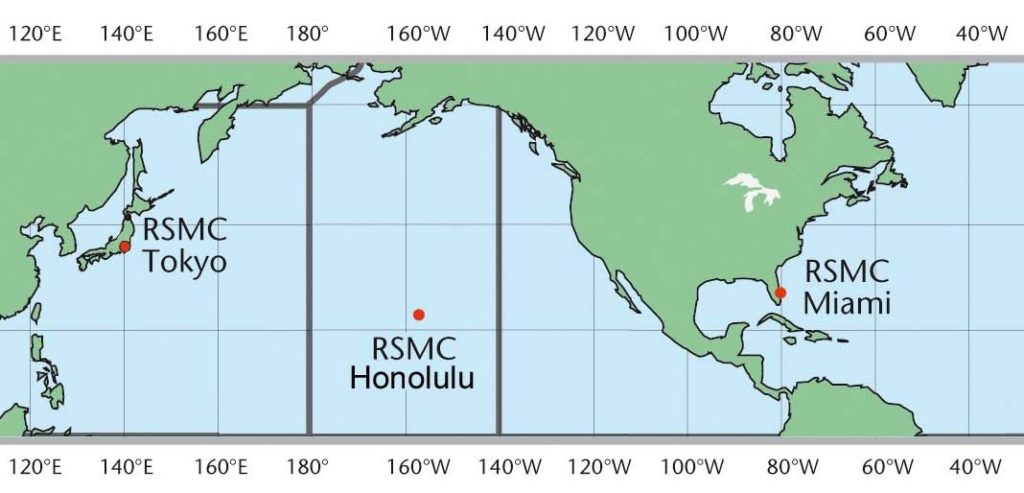Tropical cyclones that form in the Central Pacific are named using four rotating lists of Hawaiian names. We may soon use the last name from the fourth list. What makes that notable is that it has never happened before.

Two-Day Tropical Weather Outlook, 2 pm HST 9/27/18. High chance of development for what may soon be TC Walaka.
The Atlantic and East Pacific basins typically have a larger number of tropical cyclones and they being each year starting with an “A” name. (Both of those basins have six lists that are rotated through each year, so after Hurricane John in 2018 you won’t see another John until 2024.) The Central Pacific, defined as the area between 140°W and the International Date Line, is different because there are fewer cyclones that develop in the basin. Each list of Hawaiian names is followed sequentially, so a “W” name may be the first of the year. In fact, that’s exactly what happened with Tropical Storm Wali in 2014.
We started using the current naming convention in 1982. Tropical Storm Akoni (August 29-September 2, 1982) was the first tropical cyclone named from the new lists. If Invest 97C develops as expected, it will eventually be given the name “Walaka”, the final name on the fourth list. It will have taken 36 years to go through all four lists (48 names). After Walaka, next up will be Akoni again–but hopefully not until the 2019 season.
The lists of tropical cyclone names are maintained by international committees of the World Meteorological Organization. Several revisions to the Central Pacific lists were approved in 2007. In addition, the committee also meets every year and determines whether to retire and replace any names. A tropical cyclone name will be retired when it causes so much destruction that using it again for a future cyclone would be insensitive. Four names have been retired from the Central Pacific list:
- Hurricane Iwa (November 19-24, 1982)
- Iwa was replaced by Io, which was later changed to Iona in 2007
- Hurricane Iniki (September 5-13, 1992)
- Iniki was replaced by Iolana
- Tropical Storm Paka (December 2-6, 1997) [After crossing into the West Pacific, Paka strengthened into a Super Typhoon before striking Guam on December 17-18, 1997.]
- Paka was replaced by Pama
- Hurricane Ioke (August 19-26, 2006)
- Ioke was replaced by Iopa

